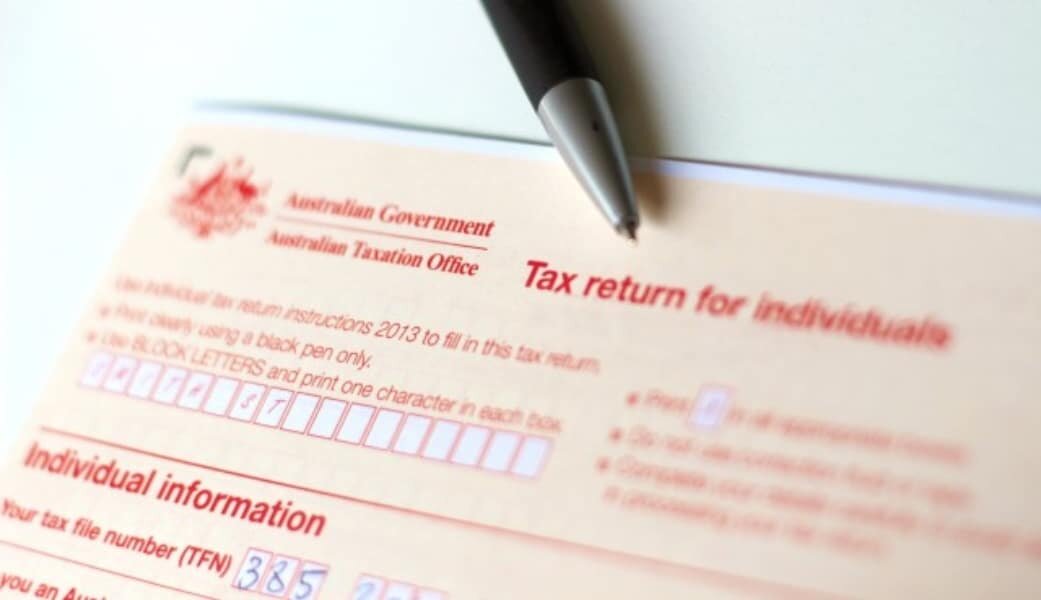How to File Your Tax Return and Maximize Your Refund This Year
How to File Your Tax Return and Maximize Your Refund This Year
Blog Article
The Uses of a Tax Return: Unlocking Possible Savings and Making Certain a Larger Tax Reimbursement
The tax obligation return works as a crucial tool for individuals seeking to optimize their economic results, supplying many methods for potential savings and enhanced reimbursements. By leveraging reductions and credit scores, taxpayers can strategically minimize their gross income and enhance their general monetary standing. Nevertheless, the complexities of tax obligation laws and the ever-evolving landscape of tax obligation regulation require a comprehensive understanding of available alternatives. What are the crucial techniques that can be employed to guarantee that taxpayers maximize these advantages? The response may disclose more than simply monetary gains.
Recognizing Tax Obligation Deductions
Numerous taxpayers may locate themselves bewildered by the complexities of tax deductions, yet recognizing these necessary parts is critical for optimizing prospective financial savings. Tax obligation reductions lower taxable income, therefore reducing the overall tax obligation for organizations and people. Familiarizing oneself with the different kinds of reductions readily available can substantially boost one's capacity to optimize income tax return.
Deductions can be categorized into basic and itemized deductions. The typical reduction provides a set decrease in gross income, while itemized reductions allow taxpayers to mention particular expenditures, such as home loan passion, state taxes, and charitable contributions. Taxpayers must analyze which option generates the greatest benefit, as selecting the ideal reduction approach can cause considerable cost savings.
Taxpayers need to also stay educated about changes in tax obligation legislations that might impact qualified deductions, as these can differ yearly. By effectively passing through the landscape of tax obligation deductions, individuals can expose the potential for a much more favorable tax result and safe and secure greater financial advantages.
Discovering Tax Obligation Credit Histories
Tax obligation credit scores stand for another notable method for taxpayers to lower their total tax responsibility, enhancing the advantages acquired from deductions. Unlike deductions, which lower taxed revenue, tax obligation credits give a dollar-for-dollar decrease of the actual tax obligation owed. This distinction makes tax obligation credit histories especially beneficial for individuals seeking to optimize their savings.
There are two main sorts of tax obligation debts: refundable and nonrefundable. Nonrefundable credit reports can lower your tax obligation responsibility to no yet not listed below that quantity, while refundable credit reports can result in a reimbursement if the credit scores exceed the tax obligation owed. Examples of commonly claimed tax credits consist of the Earned Income Tax Obligation Debt (EITC), the Child Tax Obligation Credit history, and education-related credit histories like the American Opportunity Credit Score.
Qualification needs for these credit histories can vary significantly, commonly based upon earnings, filing standing, and particular situations. Taxpayers must extensively examine the criteria connected with each credit history to identify they declare all advantages for which they qualify. By tactically making use of offered tax credit scores, people can enhance their tax returns, eventually causing significant savings and potentially larger refunds.

Investing Your Refund Wisely
Receiving a Tax reimbursement can really feel like a financial windfall, however exactly how that money is used can greatly influence long-term financial health and wellness. As opposed to watching your refund as disposable revenue, consider it a possibility to spend in your future.

One effective option is adding to a Private Retirement Account (INDIVIDUAL RETIREMENT ACCOUNT) This can boost your retirement cost savings while potentially generating tax obligation advantages. Spending in a varied stock portfolio can give significant development capacity over time, allowing your reimbursement to function for you in the market.
Furthermore, consider utilizing your refund to pay down high-interest financial debt, such as bank card balances. Lowering debt can enhance your economic standing and alleviate stress, inevitably allowing you to assign more funds towards financial investments in the future.
For those concentrated try this on education and learning, using your refund for a 529 university savings plan can help protect a brighter future on your own or your kids.
Planning for Future Expenditures
Very carefully intending for future expenditures is essential for keeping financial security and accomplishing lasting objectives. A well-structured monetary plan permits people to allot sources efficiently, making sure that upcoming expenses do not interrupt their economic wellness. Income irs bill pay tax return can provide a beneficial foundation for this preparation procedure.
Utilizing the reimbursement as a springboard, individuals can determine and prioritize substantial future costs, click to find out more such as home repair services, education and learning costs, or medical care requirements. Establishing a budget plan that integrates these prepared for expenses makes it possible for a positive technique, minimizing the likelihood of economic stress when the time pertains to resolve them.
Furthermore, establishing aside funds from your tax obligation reimbursement into specialized savings accounts can improve the efficiency of your preparation. Australian Tax return online. Take into consideration developing an emergency situation fund specifically for unforeseen expenses, making sure that you are prepared for unpredicted scenarios without derailing your financial goals
Usual Errors to Avoid
Several people make critical errors when handling their tax returns that can threaten their economic preparation initiatives. Insufficient documents can lead to missed reductions, resulting in a lower refund or greater tax obligation.
Another constant mistake is disregarding to review tax legislation changes. Tax guidelines can develop yearly, and lack of knowledge of these modifications may cause missed possibilities for tax obligation credits or deductions. In addition, several taxpayers ignore qualified reductions, such as those for academic costs or medical expenses.

Declaring tax obligations too late or also very early can additionally be harmful. Early filers might miss out on last-minute tax breaks, while late filers risk charges and passion.
In addition, not looking for specialist assistance when required can result in expensive errors. Tax obligation professionals can supply important insights, making sure conformity and maximizing potential financial savings.
Last but not least, rushing with the return can result in easy arithmetic blunders or ignored forms. Putting in the time to ascertain all entrances is crucial for an effective income tax return result.
Conclusion
To sum up, the critical application of tax obligation returns serves as a crucial system for optimizing monetary benefits. By completely comprehending and using deductions and credit scores, people can significantly minimize gross income and boost refund amounts. Additionally, sensible financial investment of reimbursements and effective preparation for future expenditures add to long-lasting economic stability. Recognition of typical risks can also improve the tax obligation process, eventually empowering taxpayers to take advantage of their returns for a much more safe and secure monetary future.
Tax debts stand for an additional remarkable method for taxpayers to reduce their overall tax obligation, matching the advantages acquired from deductions. Unlike deductions, which lower taxable income, tax obligation credits supply a dollar-for-dollar decrease of the actual tax obligation owed. Nonrefundable credits can reduce your tax responsibility to absolutely no however not below that amount, while refundable credit scores can result in a refund if the credit scores go beyond the tax obligation owed. Instances of generally asserted tax obligation credit ratings consist of the Earned Income Tax Credit Report (EITC), the Youngster Tax Obligation Credit score, and education-related credit scores like the American Chance Credit.
Tax obligation laws can progress yearly, and ignorance of these modifications might result in missed out on chances for tax credit histories or reductions. - Australian Tax return online
Report this page